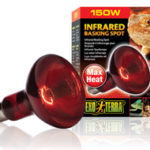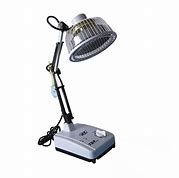Last Updated on 7 months by Francis
Welcome to our in-depth comparison of red light therapy vs radio frequency. In this article, we will explore the benefits and uses of these two skincare treatments and provide a comprehensive breakdown of their differences. As more people seek non-invasive and effective skincare solutions, these emerging technologies have gained popularity in recent years.
Both red light therapy and radio frequency are used to improve the appearance of the skin, but they work in very different ways. Red light therapy uses wavelengths of red and near-infrared light to penetrate the skin and stimulate collagen production, while radio frequency uses heat to tighten loose skin and reduce wrinkles.
In this article, we will examine the benefits and potential drawbacks of each treatment, as well as their specific uses and applications beyond skin rejuvenation.
Contents
Key Takeaways:
- Red light therapy and radio frequency are two popular non-invasive skincare treatments.
- They work on different principles: red light therapy stimulates collagen production, while radio frequency tightens the skin using heat.
- Both treatments have a range of benefits beyond skincare, including pain relief and body contouring.
- Each treatment also has potential side effects and limitations that should be considered before use.
- When choosing between red light therapy and radio frequency, it is important to consider individual skincare goals and consult with a qualified professional.
Benefits of Red Light Therapy
Red light therapy has gained popularity as a non-invasive skincare treatment with numerous potential benefits. Here are some of the ways it may improve your skin:
Increased Collagen Production
Red light therapy may help stimulate collagen production in the skin, which can improve skin texture and reduce the appearance of fine lines and wrinkles.
One study found that red light therapy increased collagen production in human skin cells, while another study showed that it improved the skin’s texture and firmness in postmenopausal women.

Skin Rejuvenation
Red light therapy may also help improve skin tone and reduce the appearance of sun damage and age spots.
One study found that red light therapy improved the appearance of sun-damaged skin in a group of middle-aged participants. Another study showed that it reduced the appearance of fine lines and wrinkles in the eye area.
Reduced Inflammation
Red light therapy may also have anti-inflammatory effects, which can be beneficial in treating skin conditions such as acne and eczema.
One study showed that red light therapy reduced inflammation and improved the healing time of skin wounds in mice.
Overall, red light therapy has the potential to improve skin texture, reduce the appearance of wrinkles and age spots, and reduce inflammation. Consult with a skincare professional to determine if red light therapy is right for you.
Benefits of Radio Frequency
Radio frequency is an increasingly popular treatment for skincare due to its many potential benefits. Here are some of the key advantages of this therapy:
- Tightening loose skin: One of the primary benefits of radio frequency is its ability to tighten loose or sagging skin, particularly on areas of the face and neck. This is achieved by stimulating collagen production in the deeper layers of the skin, which helps to firm and plump the skin surface.
- Reducing wrinkles: Radio frequency treatment may also help to reduce the appearance of fine lines and wrinkles. By stimulating collagen renewal, it can improve skin texture and elasticity, leading to a smoother, more youthful complexion.
- Improving acne scars: In some cases, radio frequency may help to improve the appearance of acne scars. By encouraging collagen production, it can help to fill in pitted scars, smoothing out the skin surface.
- Contouring the body: Radio frequency is not limited to facial treatments and can also be used on other areas of the body. By heating and breaking down fat cells, it can help to contour and reshape the body, particularly in stubborn areas such as the thighs and abdomen.
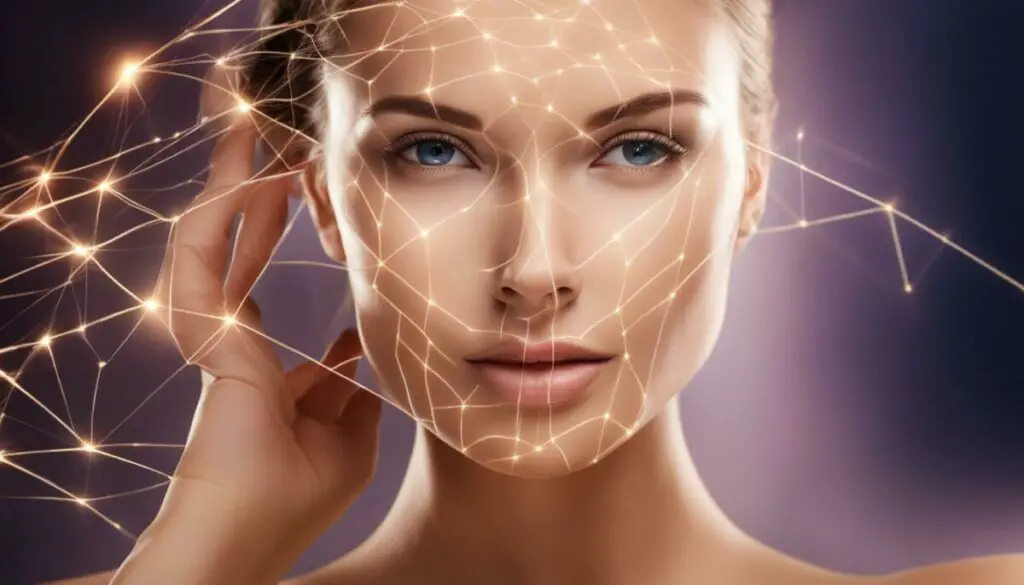
It is important to note that the effectiveness of radio frequency treatment can vary depending on individual skin type and other factors. It is always recommended to consult with a licensed skincare professional before undergoing any new treatment.
Differences between Red Light Therapy and Radio Frequency
Red light therapy and radio frequency are two different types of skincare treatments that offer unique benefits. While both treatments promote collagen production and improve skin texture, they differ in their mechanism of action and target different skin concerns.
Red Light Therapy
Red light therapy utilizes wavelengths of red and near-infrared light to penetrate the skin and stimulate collagen production. This results in increased skin elasticity, improved texture, and a reduction in the appearance of fine lines and wrinkles. Red light therapy also has anti-inflammatory properties and can be used to treat acne and other skin conditions.
It is important to note that while red light therapy can improve skin texture, it may not be as effective in addressing deeper wrinkles or sagging skin.
In contrast, radio frequency treatments use energy waves to heat the deep layers of skin, stimulating collagen production and causing the skin to tighten. Radio frequency treatments are effective in reducing the appearance of wrinkles, fine lines, and sagging skin.
Radio Frequency
Radio frequency treatments can also be used for body contouring and cellulite reduction. The heat generated by the radio frequency waves can break down fat cells and tighten the skin.
While both treatments offer unique benefits, they differ in their levels of invasiveness and the type of skin concerns they target. Red light therapy is a non-invasive treatment that is ideal for improving skin texture and treating mild to moderate skin concerns. Radio frequency treatments are more invasive and are effective in reducing the appearance of wrinkles, fine lines, and sagging skin.

Ultimately, the choice between red light therapy and radio frequency will depend on your specific skincare needs and goals. It is important to consult with a skincare professional to determine which treatment is right for you.
Uses of Red Light Therapy
Red light therapy has been widely studied for its potential to treat a range of conditions beyond skincare. Here are several uses of red light therapy:
- Pain relief: Red light therapy may be effective in reducing pain and inflammation caused by conditions such as arthritis, back pain, and fibromyalgia. According to a 2014 study published in the journal Pain Research and Treatment, red light therapy was found to provide significant short-term pain relief for patients with knee osteoarthritis.
- Wound healing: Red light therapy has shown potential in accelerating wound healing and reducing scarring. A 2014 study in the Journal of Cosmetic and Laser Therapy found that red light therapy improved the healing of surgical scars compared to a placebo group.
- Acne treatment: The anti-inflammatory properties of red light therapy may help to reduce acne and prevent future breakouts. A 2018 study published in the Journal of Cosmetic Dermatology found that patients who received red light therapy had a significant reduction in both inflammatory and non-inflammatory acne lesions over a 12-week period.
- Muscle recovery: Red light therapy may improve muscle recovery time and reduce muscle fatigue. A 2018 study published in the International Journal of Sports Medicine found that red light therapy improved muscle performance and reduced muscle damage after high-intensity exercise.
It’s important to note that while red light therapy shows potential for these uses, more research is needed to fully understand the extent of these benefits and how to best utilize the treatment.
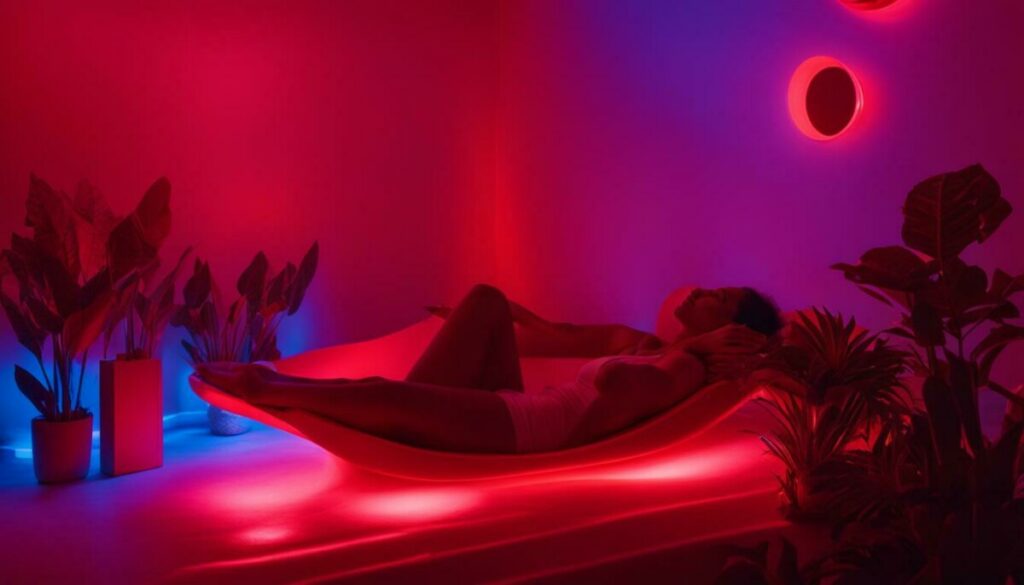
Uses of Radio Frequency
Radio frequency isn’t just for improving skin tone and texture. This treatment method has many uses in addition to its skincare benefits.
One of the most popular applications of radio frequency is body contouring. Radio frequency waves can be used to target fat cells, causing them to break down and be eliminated by the body. This can result in a more toned and sculpted appearance.
In addition to body contouring, radio frequency can also be used for cellulite reduction. By targeting the underlying connective tissues that contribute to cellulite, radio frequency can help smooth out dimpled skin and improve overall texture.
Radio frequency has even been used for pain relief, particularly in the case of chronic pain. By delivering energy to the affected area, radio frequency can help reduce inflammation and alleviate pain without the need for medication.
Overall, radio frequency is a versatile treatment method with numerous uses beyond its benefits for skin rejuvenation. Whether someone is looking to sculpt their body, reduce cellulite, or manage chronic pain, radio frequency may be an effective option.

Side Effects of Red Light Therapy
Like any other treatment, red light therapy may have some potential side effects, although they are typically mild and temporary.
One of the most commonly reported side effects of red light therapy is skin irritation or sensitivity, which may manifest as redness, itching, or dryness. This is typically more common in people with sensitive skin or those who use high-intensity light therapy devices.
Another possible side effect of red light therapy is headaches, although this is much less common and may only occur in a small percentage of people.
It’s important to note that red light therapy is generally considered safe when used as directed, and the risk of serious side effects is low. However, if you experience any unusual symptoms or discomfort during or after treatment, you should consult your healthcare provider.
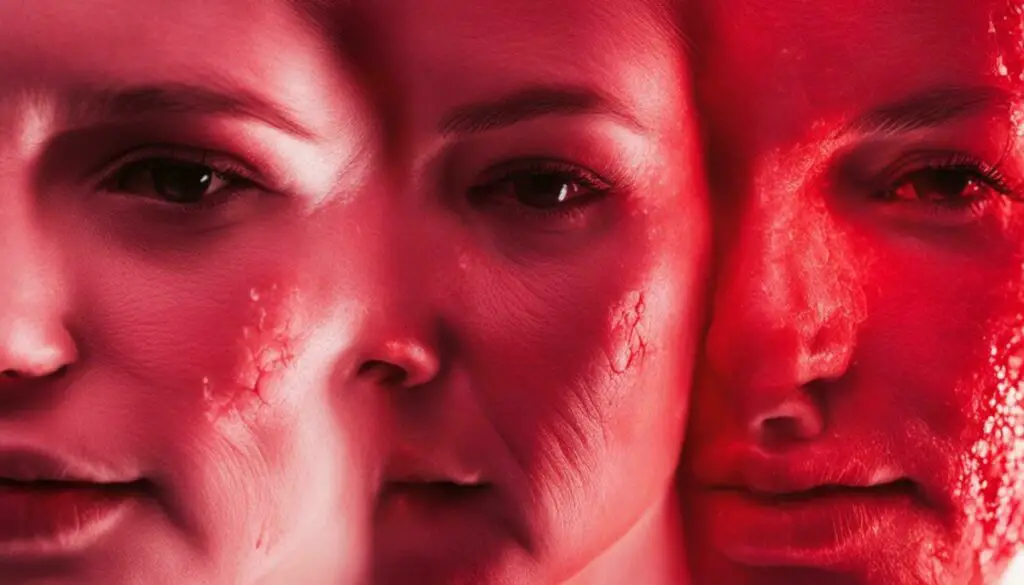
Conclusion:
While red light therapy may have some potential side effects, they are generally mild and temporary. As with any treatment, it’s important to use red light therapy as directed and consult your healthcare provider if you have any concerns or experience unusual symptoms. With proper use, red light therapy can be a safe and effective treatment for a range of skincare and health concerns.
Side Effects of Radio Frequency
Radio frequency is generally considered a safe and effective treatment for skincare, but as with any medical procedure, there may be some side effects to consider.
One common side effect of radio frequency is temporary redness or swelling in the treated area. This is a normal response to the heat generated by the treatment and should subside within a few hours to a few days.
In rare cases, more serious side effects may occur, such as burns or blistering. These side effects are more likely to occur if the treatment is performed incorrectly or if the skin is not properly prepared beforehand.
It is important to choose a qualified and experienced practitioner for radio frequency treatment and to follow all post-treatment instructions carefully to minimize the risk of side effects.
If you experience any unusual side effects or complications after radio frequency treatment, be sure to contact your healthcare provider immediately.

Effectiveness of Red Light Therapy
Red light therapy has been the subject of numerous scientific studies evaluating its effectiveness for various conditions, including skin rejuvenation and pain relief. Research suggests that red light therapy stimulates the production of collagen, which helps to reduce the appearance of fine lines and wrinkles.
One study published in the Journal of Clinical and Aesthetic Dermatology found that red light therapy improved skin complexion and texture in 91% of participants with photodamaged skin. Another study published in Photomedicine and Laser Surgery found that red light therapy reduced pain and inflammation in patients with osteoarthritis of the knee.
However, it is important to note that the effectiveness of red light therapy may vary depending on factors such as the specific condition being treated, the intensity and duration of the treatment, and individual differences in skin type and sensitivity. Additionally, more research is needed to fully understand the long-term benefits and potential risks of red light therapy.
Understanding the Limitations of Red Light Therapy
While red light therapy shows promise for a variety of applications, it is not a cure-all and may not be effective for everyone. It is important to consult with a healthcare professional or licensed skincare provider to determine if red light therapy is an appropriate treatment option for you.
Additionally, due to the limited depth of penetration of red light into the skin, it may not be as effective for treating deeper tissue or muscle pain. In these cases, other treatments such as massage therapy or physical therapy may be more suitable.

Overall, it is clear that red light therapy has potential benefits for a variety of conditions, particularly in the field of skincare. However, it is important to approach this treatment with realistic expectations and to work with a qualified professional to determine the best approach for your individual needs.
Conclusion: Choosing the Right Treatment for You
Deciding between red light therapy and radio frequency can be a tough decision, but ultimately it comes down to your individual skincare needs.
If you are primarily concerned with reducing the appearance of wrinkles or tightening loose skin, radio frequency may be the better option for you. On the other hand, if you are looking to improve collagen production and rejuvenate your skin, red light therapy may be the way to go.
It’s important to note that both treatments have their unique benefits and limitations. Red light therapy can be used to treat a wide range of conditions beyond skincare, such as pain relief and wound healing, while radio frequency has applications in body contouring and cellulite reduction.
When it comes to potential side effects, both treatments carry some risks such as temporary redness or skin sensitivity. However, these side effects are usually mild and temporary.
Overall, the effectiveness of both treatments largely depends on individual factors such as skin type and condition, making it important to consult with a skincare professional before making a decision.
Red Light Therapy vs Radio Frequency: Which is Right for You?
While there is no right or wrong answer when it comes to choosing between red light therapy and radio frequency, considering your specific skincare needs and consulting with a professional can help you make an informed decision.
Remember, both treatments have the potential to improve your skin’s overall health and appearance, so no matter which one you choose, you’ll be taking a positive step towards achieving your skincare goals.
FAQ
What is the difference between red light therapy and radio frequency?
Red light therapy and radio frequency are two distinct skincare treatments that utilize different wavelengths of light and electrical currents respectively. Red light therapy primarily focuses on stimulating collagen production and promoting skin rejuvenation, while radio frequency targets loose skin and wrinkles by delivering heat energy to the deeper layers of the skin.
What are the benefits of red light therapy?
Red light therapy offers numerous benefits for skincare, including increasing collagen production, improving skin tone and texture, reducing inflammation, and accelerating wound healing. It may also help alleviate certain types of pain and promote hair growth.
What are the benefits of radio frequency?
Radio frequency treatment has been found to effectively tighten loose skin, reduce the appearance of wrinkles, and improve skin elasticity. It can also enhance blood circulation and stimulate collagen production, leading to smoother and firmer skin.
How do red light therapy and radio frequency differ?
Red light therapy primarily targets the superficial layers of the skin, promoting collagen production and skin rejuvenation. On the other hand, radio frequency treatment penetrates deeper into the skin, delivering heat energy to target loose skin and wrinkles from within. The two treatments have different mechanisms of action and address distinct aspects of skincare.
What are the uses of red light therapy?
In addition to its skincare benefits, red light therapy can be used for pain relief, reducing inflammation, promoting wound healing, improving muscle recovery, and stimulating hair growth.
What are the uses of radio frequency?
Besides its skincare applications, radio frequency treatment can be used for body contouring, cellulite reduction, and even vaginal tightening. It is a versatile treatment with various uses beyond improving the appearance of the skin.
Are there any side effects of red light therapy?
While red light therapy is generally considered safe, some potential side effects may include temporary redness, dryness, or sensitivity of the skin. These effects are usually mild and resolve on their own.
Are there any side effects of radio frequency?
Radio frequency treatment may cause temporary redness, swelling, or minor discomfort in the treated area. These side effects typically subside shortly after the treatment.
How effective is red light therapy?
The effectiveness of red light therapy can vary depending on the individual and the specific condition being treated. While numerous studies show positive results in terms of improving skin health and reducing certain symptoms, it may not work for everyone and results may vary.
How do I choose the right treatment between red light therapy and radio frequency?
When choosing between red light therapy and radio frequency, it is important to consider your specific skincare needs and goals. Consult with a qualified skincare professional who can assess your skin condition and provide personalized recommendations based on your individual needs and desired outcomes.







